The Climate Crisis Is Pushing Companies Toward Social and Political Activism
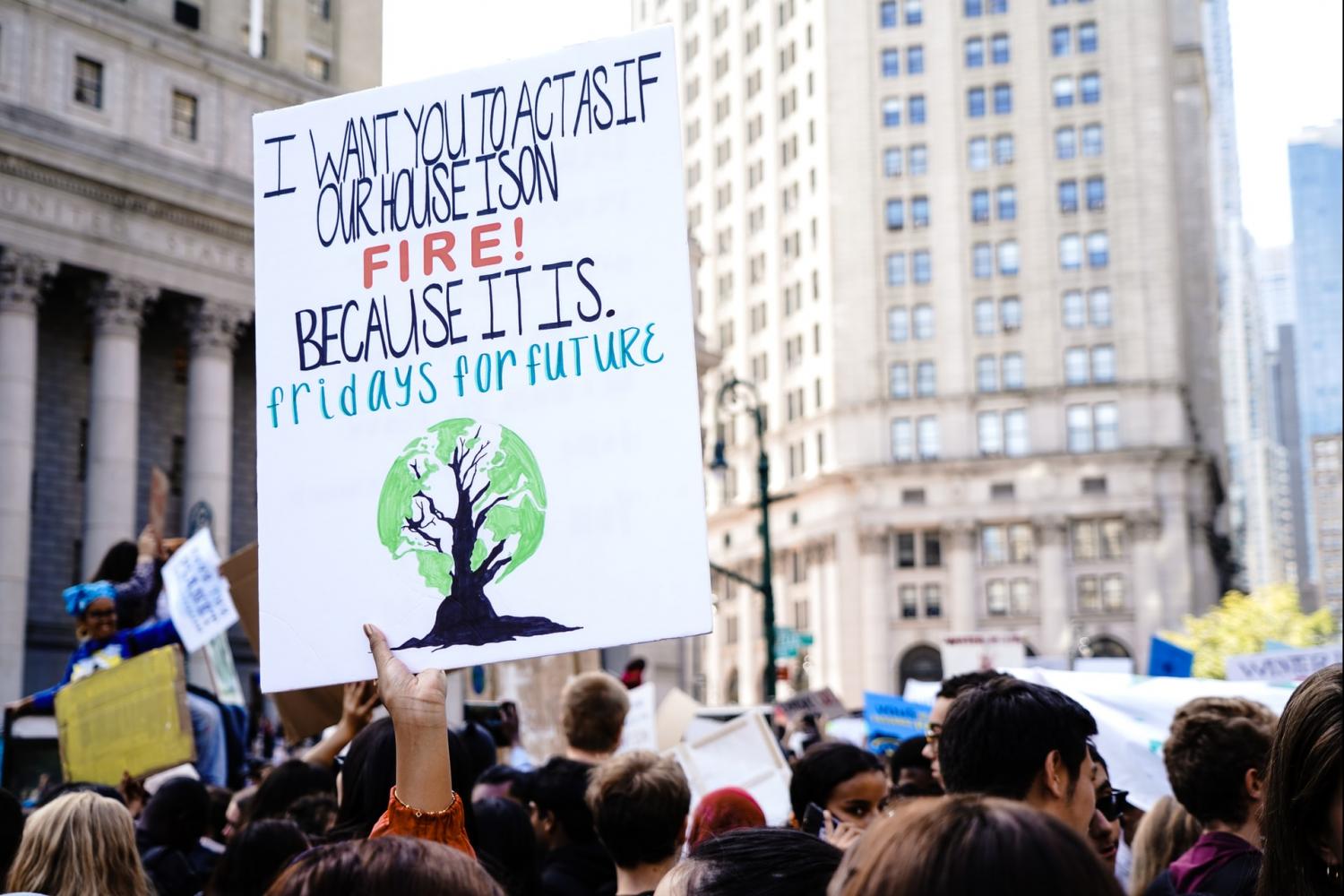
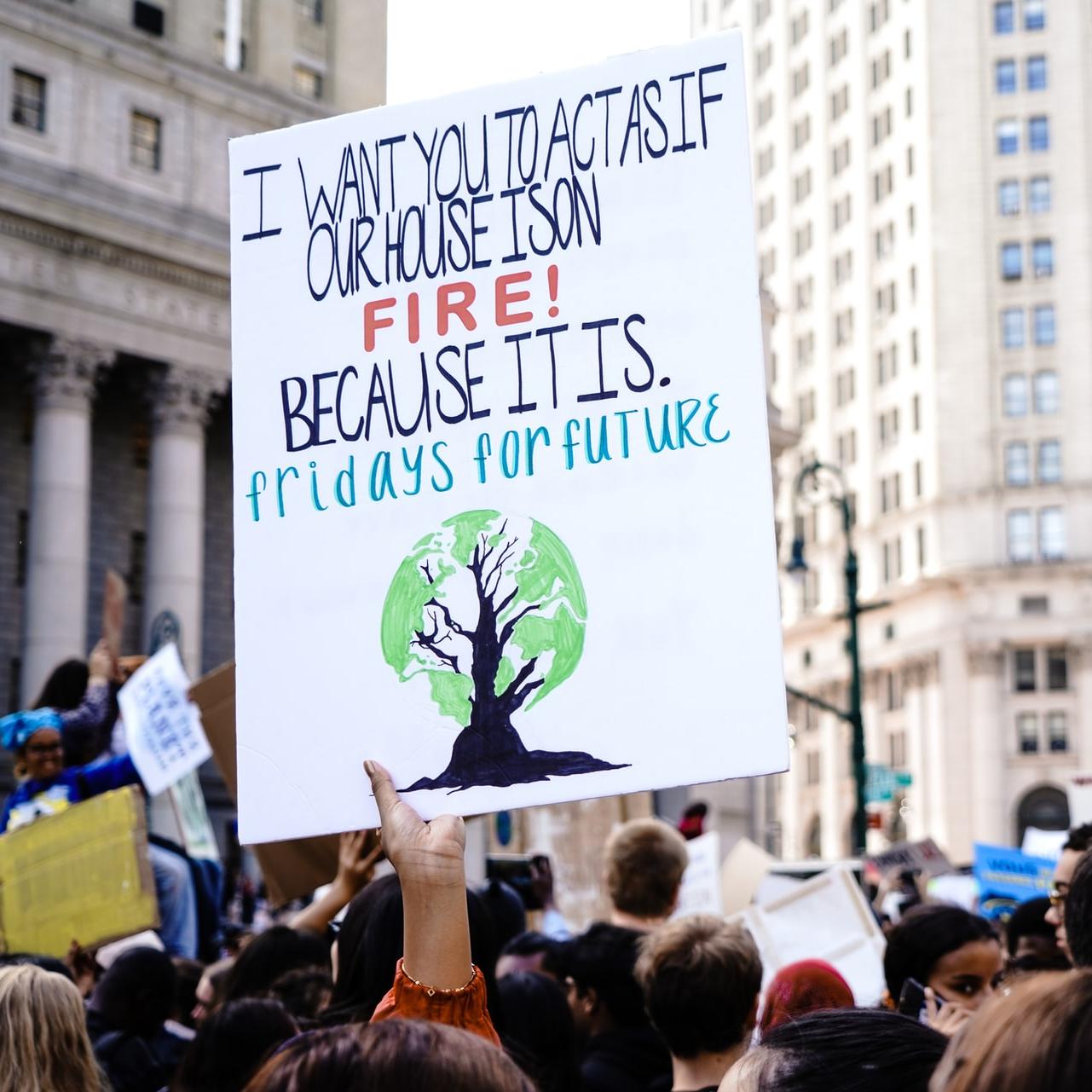
The climate crisis is linked to all the upheaval the world is experiencing in 2020, and more companies are responding in kind. As calls for social and environmental justice grow worldwide, with the global uprising in support of the Black Lives Matter movement, and as Climate Week 2020 focused on achieving a net-zero future through a just transition, businesses continue to explore how to build climate equity and environmental justice into their operations.
The climate crisis: Overlooked no more
A recent Oxfam study found that the wealthiest 1 percent of the global population is responsible for more than twice the carbon emissions as the world’s poorest 50 percent. And in 2017, CDP found that 100 fossil fuel producers were responsible for 71 percent of all global GHG emissions.
While the latest research indicates that a relatively small number of individual and corporate actors are contributing to a disproportionate amount of global emissions, the environmental justice movement has been advocating for years to promote awareness on the disproportionate effects of climate change on Black, Indigenous, and People of Color (BIPOC), a phenomenon known as environmental racism.
The impacts of these inequitable outcomes can be seen in the United States, where Black and Hispanic people are more likely to live in neighborhoods with high pollution levels, and Black Americans are three times more likely to die of asthma than their white counterparts.
How can businesses not only adapt, but lead on climate equity?
Recently, sustainability-focused Presidio Graduate School partnered with the startup grassroots "think-and-do tank," Hypha Collective, to bring together industry experts and academics to discuss business strategies that acknowledge and adapt to the climate crisis.
Panelists examined how the business world is taking these realities into account when developing strategies to address climate change and environmental racism. It turns out that today’s leaders draw inspiration from some surprising sources, pushing the boundaries of business by considering the intersection of ecological and social frameworks.
One area of focus is on the human relationship to the natural world, with traditional practices of Indigenous land management showing time-tested examples of effective ways to sequester carbon and protect biodiversity. In Brazil, advocates of Indigenous land rights and ownership are urging businesses and the government to consider the potential of these practices to reduce carbon emissions and benefit the local economy by an estimated $523 billion, adding up to $1.165 trillion over the next 20 years.
“It’s crucial to look at these long held Indigenous practices to center the voices of those at the front lines of the climate crisis, and incorporate justice into our climate equity work,” said Khalid Kadir, provost and professor at Presidio Graduate School.
“Communities at the frontline of the climate crisis need to be designing these new systems,” added Alfredo Gonzalez Valenzuela, community engagement and organizational change expert and Presidio Graduate School alumni. “We can do better than inviting people to have a seat at the table. We should start by going to them and listening to what solutions and support they want.”
Beyond a focus on traditional land management practices, businesses around the world are also turning to biomimicry, a process of studying and replicating individual flora, fauna, and natural systems in their products or operations to solve ecological and social dilemmas. While biomimicry is relatively new in the business world, many Indigenous communities have traditionally modeled their cultures and practices after the natural world.
The focus on climate has led to other forms of activism
Other sources of inspiration include commitments to social and political action. In the lead-up to the 2020 general election in the U.S., small businesses and major companies alike have promised to provide employees with paid time off to vote, and public support for election day as a paid holiday among the business community is increasing. Time to Vote, a nonpartisan coalition of businesses started by Patagonia, Levi Strauss & Co, and PayPal before the 2018 midterm elections, which works to increase voter participation in the U.S., currently has the support of more than 700 companies.
And in the wake of the global uprising against racism and police brutality in recent months, as businesses determine how to respond to calls for action and solidarity, anti-racist practices such as the examination of white supremacy characteristics in organizations and the design justice principles that support organizational shifts toward regenerative and healing practices provide a useful starting point.
“We must push our organizations to change their policies and at the same time, recognize that these efforts alone may not be enough to support the kind of change we want to see. As Audre Lorde said, ‘we can’t use the master’s tools to dismantle the master’s house’,” said Chelsea Schiller, an organizational sustainability consultant and Presidio Graduate School student.
There are as many approaches to social and environmental justice through business practices as there are companies. And as with any complex process, there is no one-size-fits-all model. These frameworks and tools offer a starting point for leaders committed to making meaningful changes to their operations in order to pursue an equitable future for all.
Editor’s note: Make sure you register for the free virtual 3BL Forum, starting next Thursday, October 8, at 12 p.m. ET.
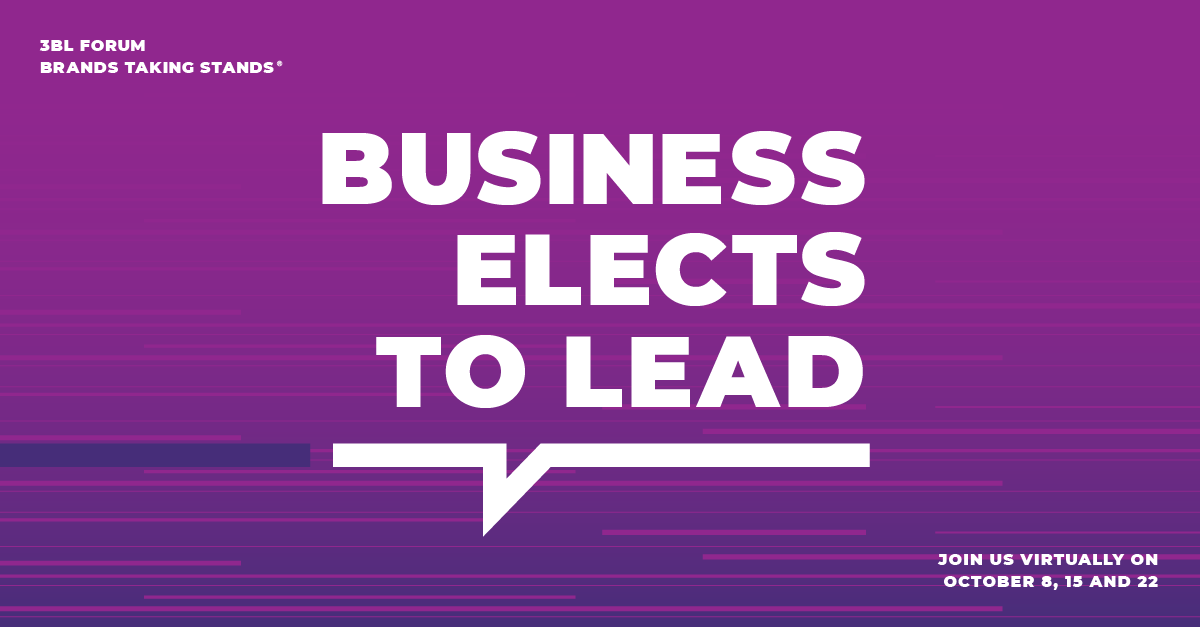
Image credit: Katie Rodriquez/Unsplash
For BlackRock, Circularity Is Off to a $900 Million Start


Global asset manager BlackRock recently announced that its investment fund focused on the circular economy has raised $900 million since its launch just a year ago, ballooning from BlackRock’s initial seed money of $20 million.
Circularity is one important part of the ESG investing story
Sustainability was always going to be a central theme of 2020 after environmental challenges took center stage at events such as the World Economic Forum’s annual meeting at Davos. Nine months after that event, despite the disruptions resulting from the COVID-19 pandemic, there has been a remarkable shift of capital moving to ESG (environmental, social and governance) funds and investments.
Remarking on the quick growth of BlackRock’s new circular fund, Evy Hambro, the fund’s principal manager, has called its progress “encouraging.”
Beyond the financials, this BlackRock fund signals the environmental benefits that could result as the world undergoes a transformation to the circular economy. The Ellen McArthur Foundation (EMF), which helped BlackRock develop this fund, stated recently that a move to a circular economy could generate 45 percent of the cumulative emissions cuts needed for a 2050 net-zero economy.
Yet, there is much to do, warned Dutch think tank Circle Economy. In a report released at the Davos meeting earlier this year, the group found only 8.6 percent of the economy worldwide is currently circular.
A circular economy fund, as defined by BlackRock
The BlackRock fund, called the BGF Circular Economy, invests in companies of various sizes, with packaging, chemicals, electronics, fast moving consumer goods and forest products making up a substantial percentage of the fund. Currently its top three holdings are Ball Corp (3.75 percent), an aluminum packaging company; the Dutch conglomerate Philips (3.38 percent); and Microsoft (3.37 percent).
The fund’s managers group equities into three categories: adopters, enablers and beneficiaries, all of which are based on their companies’ place within the circular economy. BlackRock defines companies that are setting targets on circularity within their own operations as “adopters.” This grouping of companies, which represents almost half of the businesses in which the fund has invested, includes such brands as Nike, L’Oreal, Coca-Cola Partners, Nestlé and Trex. Companies innovating on circular solutions are categorized as “enablers,” while companies that benefit from circularity are categorized as “beneficiaries.”
According to BlackRock, all companies that make up this fund are first screened using the firm’s ESG criteria to ensure the entire fund measures up as “sustainable,” and to increase the likelihood of compelling risk-adjusted returns.
Considering recent trends in the equities markets during the first half of 2020, funds with a sole or partial focus on the circular economy performed on average 5 percent better than Morningstar category benchmarks, according to a recent EMF report.
Can large caps lead on the circular economy?
Doubts will persist whether companies focused on circularity can also contribute to economic growth. And there are questions about whether legacy companies can fully pivot toward a circular business model.
Back in 2016, Michael Molitor, who at the time was a senior fellow at the Ray C. Anderson Foundation, discussed the challenges in creating a circular economy. He noted that institutional investors mainly invest in safe, large, predictable, low-growth companies. Many of these large but low-growth companies are attempting to contribute to a circular economy, said Molitor — and four years later, many of these companies are included in BlackRock’s circular economy fund.
On that point, a 2015 joint study completed by EMF and the McKinsey Center for Business Environment suggested a shift toward the circular economy, which could boost resource productivity, could actually help these companies improve their competitiveness, revenues and innovation.
Rob Kaplan, writing for Forbes, expressed concerns over the BlackRock fund’s launch last year as he believed companies in the portfolio were not actually innovating on recycling, waste, and alternative materials for “truly circular solutions” that could transform the value chain.
The circular economy keeps gaining momentum
According to EMF, the number of funds with a focus on the circular economy has increased ten-fold since 2016. Meanwhile, these funds’ total assets under management (AUM) jumped six-fold, from $300 million in 2016 to over $2 billion in early 2020.
The business case for circularity is evident, as EMF noted 13 percent of Philips’ revenues in 2019 were tied to circular solutions. In the European Union, the Joint Initiative on Circular Economy launched last year to support circular economy investment and aims to invest 10 billion euros into circular economy projects by 2023. Hence BlackRock may be onto something.
This $900 million fund may only be small compared to Europe’s circularity initiative, and it's certainly tiny compared to the estimated $100 trillion in global assets under management. And at last count, BlackRock disclosed the total assets within its portfolios to be worth over $6.8 trillion, making that circular economy fund one drop in the firm’s massive bucket. Nevertheless, the fund’s jump in popularity, and its bet on the potential for large cap companies to embrace circularity, could mark the beginning of circular business models becoming the rule, not the exception.
Image credit: Mel Poole/Unsplash
A First Look at Next Week’s Virtual 3BL Forum Speaker Lineup
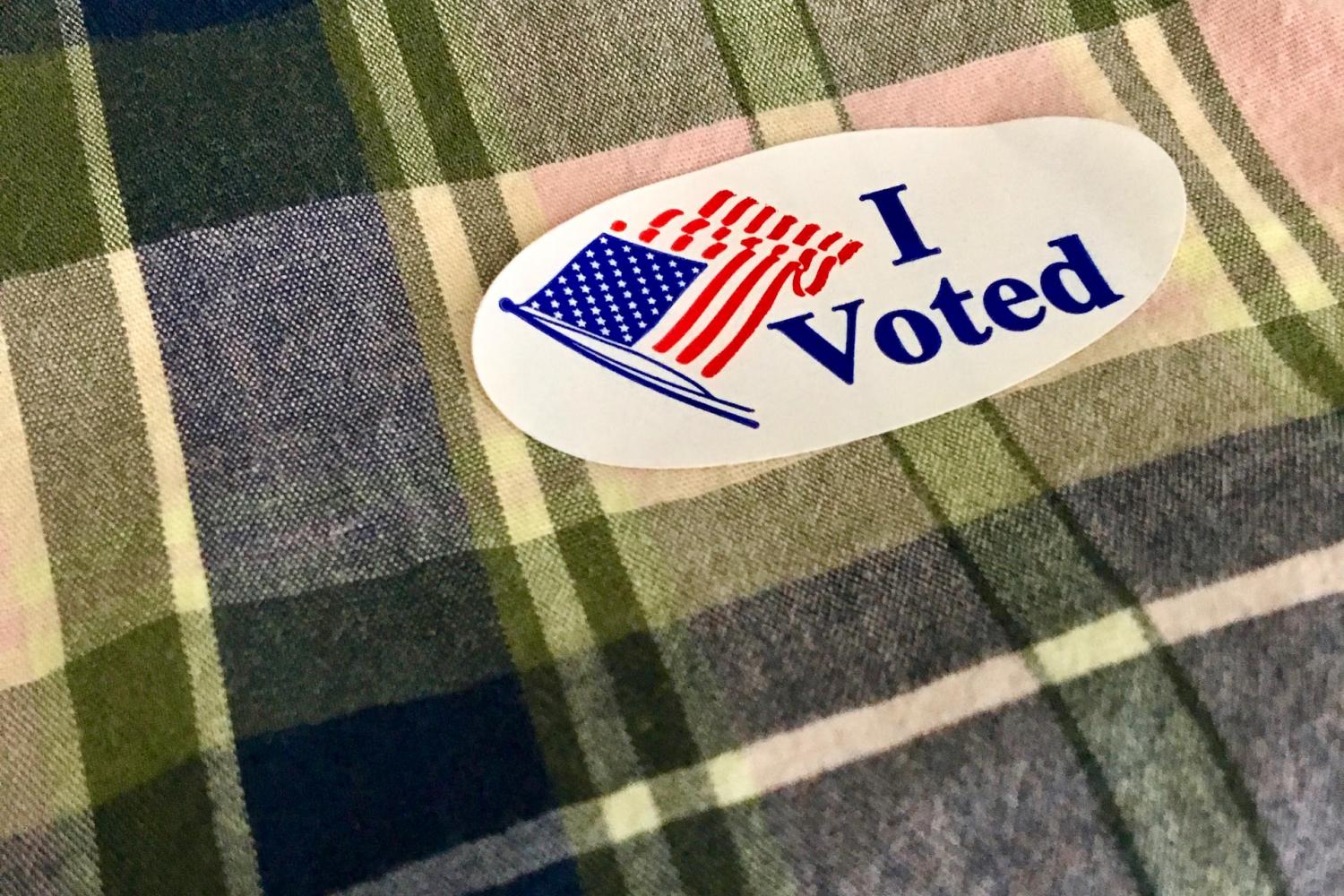

In less than one week, starting Thursday, October 8 at Noon ET, senior leaders from top brands will convene for episode one of our virtual 3BL Forum: Brands Taking Stands - Business Elects to Lead.
The Virtual Forum will kick off with Episode 1, exploring how crises can absolutely reveal character and business leadership in response to the COVID-19 pandemic. Insight will include research reveals from Porter Novelli on what the business community has learned the past eight months - and what business leaders should expect of themselves.
Throughout this year’s 3BL Forum - each episode of which will last 90 minutes - attendees will also hear conversations with corporate leaders from Intel, Bayer, Mars and UnidosUS. We will also host a panel on business leadership around the novel coronavirus with Johnson & Johnson, ViacomCBS and Aflac.
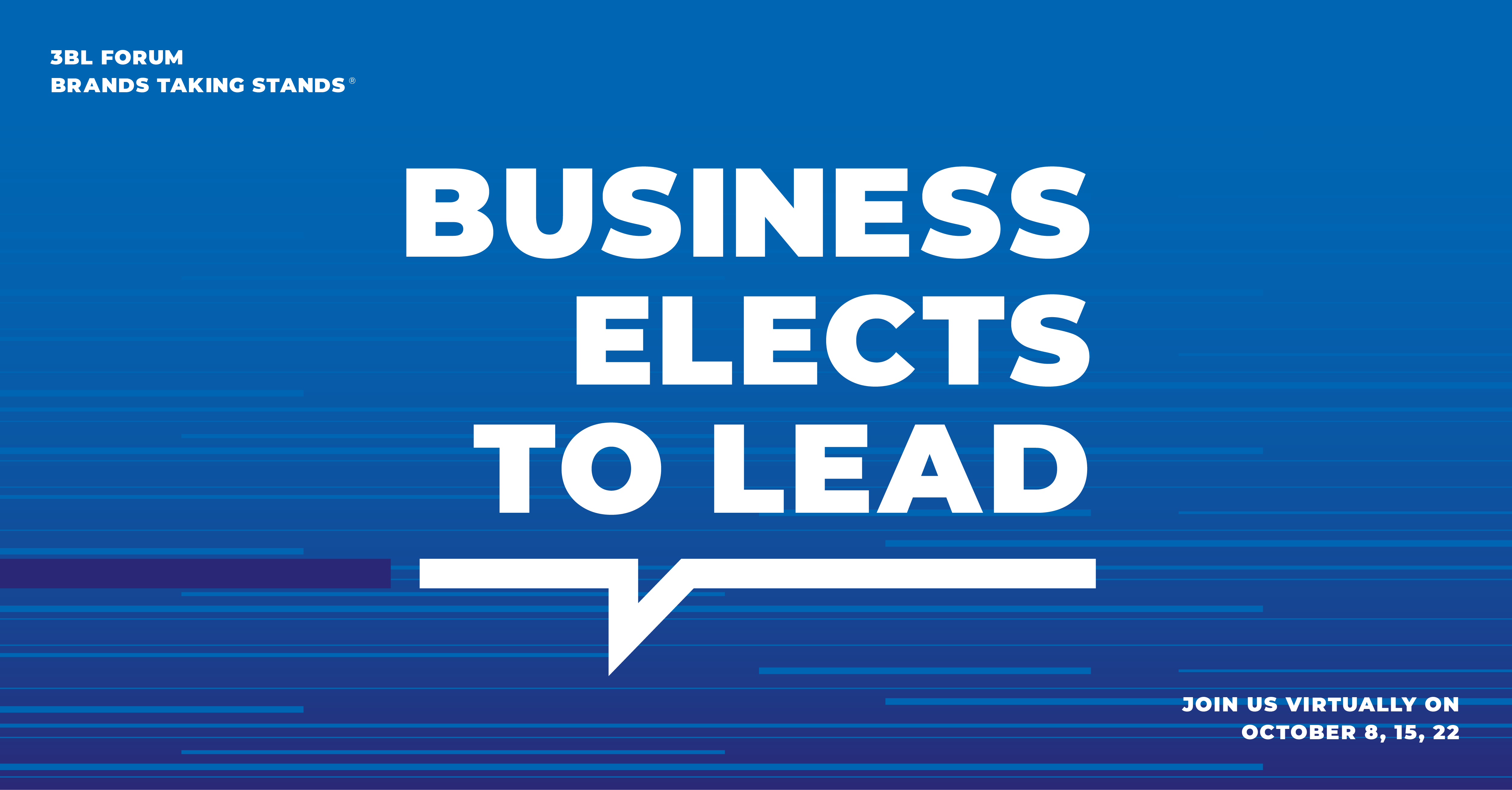
Episode 2, on Thursday, October 15 at Noon ET, will feature leaders from Newman’s Own, John Hancock, Pizza Hut, Ben & Jerry’s, BET Network, Chief Executives for Corporate Purpose, Zeno Group and NetImpact.
And to wrap up, Episode 3 on Thursday, October 22 at Noon ET will showcase brands and companies sharing their ideas ensuring everyone exercises their right to vote. Organizations who plan on joining us include Accenture, MTV/Comedy Central, ViacomCBS, Univision, Business for America, GlobeScan and JUST Capital.
Be sure to register for this event here!
A gentle reminder: Registration is required to access all three episodes of the 3BL Virtual Forum. And to be clear, the editors here at TriplePundit are pleased to make this event available at no cost.
During these three episodes, we will feature corporate leaders on one virtual main stage to present perspective on leading company’s actions and activism as together, we dive into “the how” and “the why” behind business leadership at a time when it’s needed most.
"See" you there!
Sign up for the weekly Brands Taking Stands newsletter, which arrives in your inbox every Wednesday.
Image credit: Dan Dennis/Unsplash
Companies Can’t Afford to Ignore Forced Labor in China Anymore


The more we learn about forced labor and the human rights situation in China, particularly as it affects minority groups including the mostly Muslim Uyghurs and ethnic Tibetans, the worse it gets. Over the past several years, news has broken about the largest system of concentration camps since World War II, the widespread intentional destruction of cultural heritage, and the jailing of peaceful locals for crimes such as "politically incorrect” ideas in cities like Urumqi (shown above). Reports indicate some have been sentenced to jail for actions as small as petitioning for Tibetan language education.
In the past few months, journalists and independent researchers have uncovered a massive expansion of forced labor programs that have impacted hundreds of thousands of innocent people. This has even forced Congress to act in a rare show of bipartisanship. Altogether, growing public awareness and political action may affect many major brands, several of which are implicated due to the interconnectedness of global supply chains.
“If responsible business conduct has any meaning, it requires brands to act when independent journalists, United Nations human rights experts, and human rights NGOs expose grave human rights abuses,” said Jennifer Rosenbaum, executive director of global labor justice at the International Labor Rights Forum, in a press statement. “Business and human rights principles require ... brands to stop using cotton and labor from the Uyghur Region in their global supply chains.”
So far, only a few companies have acted, most notably European fashion brand H&M, which cut ties with a supplier accused of using Uyghur forced labor. Most, however, have remained silent or say they are still investigating.
Inaction could soon have a bigger cost. The Uyghur Forced Labor Prevention Act passed the House of Representatives with an overwhelming vote of 406-3 and has been introduced in the Senate. If it becomes law, it would put the burden of proof on importers to show clear and convincing evidence that goods were not produced with forced labor before allowing them into the country.
“Companies are now on notice,” said Omer Kanat, executive director of the Uyghur Human Rights Project, in an emailed press statement. “Americans do not want to be complicit in buying products made by Uyghurs locked in Chinese forced-labor factories. We thank the House of Representatives for responding with a resounding vote to pass this bill.”
It is disappointing that companies — many of which, to their credit, have spoken up for important issues domestically like Black Lives Matter or the right to vote — are almost universally silent on the Uyghur human rights crisis.
The bill, as it is currently written, would only affect goods imported from Xinjiang, the Chinese name for the Uyghur homeland, in the west of the country. Here’s the problem: That might not be enough.
A report entitled “Uyghurs for Sale,” released earlier this year by the Australia Strategic Policy Institute (ASPI), found that Uyghurs were being transferred to other parts of China. Coda Story found that, during the height of the pandemic in China, Uyghurs were forced to work in factories that were otherwise closed, putting themselves at risk of infection. And the New York Times even found evidence that Uyghurs were being used to make face masks and other medical supplies all around China, perhaps even the ones you or your family is wearing right now.
Then, the latest bombshell from Reuters: A similar forced labor system is being implemented in Tibet, another region which has long seen repression at the hands of Chinese authorities. There, perhaps half a million Tibetans — 10 to 15 percent of the population — have been put in these programs, with at least several thousand being sent to work in other parts of China.
“China’s coerced labor program ... not only threatens the survival of Tibetans, but also to the integrity of the global supply chain and the values of the democratic order,” said Matteo Mecacci, president of the International Campaign for Tibet.
Brands have for decades relied on China as a source of raw materials like cotton or cheap labor for factories. They long ignored the lack of labor protections and human rights concerns, putting cost and profits ahead of people. But as the situation in China has deteriorated in the past decade, it has now become increasingly difficult to do business in China without being complicit in what many are calling a genocide.
There’s no easy solution. Shifting supply chains away from China will be costly. But to remain — when upwards of a million Uyghurs are in camps and countless more Uyghurs and Tibetans are in forced labor situations — far too great a risk for both people and corporate reputations.
Image credit: Miradil/Pixabay
Ending Racial Inequality Could Add $5 Trillion to U.S. GDP


Citi Group recently published an eye-opening report on racial inequality in the U.S. The bank’s report outlines four main racial gaps that confront many Black Americans: wages, education, housing and investment. Citi concludes that if these gaps had been closed 20 years ago, $16 trillion could have been added to the U.S. GDP. If those gaps were to be closed today, the results would potentially add as much as $5 trillion to the country's GDP over the next five years.
In a foreword by Citi executive Raymond J. McGuir, he shares his experience of being a successful Black man in America. He notes that even for successful Black Americans like himself, things are not perfect at the top either, stating: “Even today, with all those credentials and as one of the leading executives on Wall Street, I am still seen first as a six-foot-four, two-hundred-pound Black man wherever I go — even in my own neighborhood.”
McGuir’s insight on racial inequality brings to light the inherent bias that seeps into every aspect of American life to this day, regardless of an individual’s success. If a Black person can succeed in the current system and still experience abuse or wariness from others, then it’s the system that perhaps needs to change, not just the internal metrics embedded in the current system as it stands.
For example, one 2006 study found 78 percent of those who took Harvard University's Implicit Association Test (IAT) displayed implicit bias, with 85 percent of whites showing bias against Black people. This bias is a distant remnant of the legacy of slavery, writes Richard Rothstein in his book, The Color of Law. The many barriers to ending racial inequality in the U.S. is “the byproduct of explicit government policies at the local, state, and federal levels,” Rothstein asserts.
The Citi report discusses these issues at length, analyzing how these past problems have created the racial inequality that continues today, with some alarming statistics. Citi reports that gaps in homeownership rates, a key wealth and equality metric, are wider now than in the 1950s and 1960s, and that this problem continues to grow. The same holds true for college degree attainment.
On that point, the Center for NYC Neighborhoods, which launched the New York Black Homeownership Project to identify current gaps, found that Black home ownership in the borough of Queens, New York, has alone fallen by 20,000 between 2005 and 2017. The project identified predatory lending leading up to the 2008 financial crisis as being partly to blame.
U.S. House Speaker Nancy Pelosi hammered that point during a recent discussion at the National Low-Income Housing Coalition, saying: “Housing security is a matter of justice, as structural racism puts communities of color unfairly at risk of being rent burdened or homeless.”
Citi notes that closing racial gaps and increased diversity, “while imperfect,” can end up generating positive developments for business and society. Businesses cannot tackle housing inequality or intergenerational wealth directly, but they can do so indirectly by helping Black Americans build wealth and attain affordable mortgages. To sum up the challenges facing Black Americans, these families “have missed out on the benefits of home price appreciation — a key ingredient to wealth accumulation,” the Citi report reads.
According to Citi, “the body of literature suggests that when executed well, diversity and inclusion in the workplace could lead to increased revenue, reduced costs, greater innovation, and increased employee engagement, productivity, and commitment,” with companies in the top quartile for both gender and ethnic diversity 12 percent more likely to outperform companies in lower quartiles. Taking a far more proactive approach on race can result in good news for business and good news for Black Americans wanting to get on the housing ladder.
The findings about racial inequality and “trouble at the top,” as identified by Citi’s McGuir, should be a warning sign that correcting certain metrics such as wage gaps and diversity targets, though excellent aims with positive outcomes for business and society today, should not make us complacent about tackling wider systemic issues.
The U.S. must look deeper if it wishes to dig out the roots rather than trim the symptoms of racial inequality. This huge social challenge must be tackled at the front end and the back end of the economic and political system.
Image credit: Sean Lee/Unsplash
As Diversity Training Becomes the New Red Scare, Corporate Leaders Stay Mum — For Now


U.S. President Donald Trump lobbed a firebomb into the field of corporate social responsibility on September 22 when he issued an executive order banning certain types of diversity training within the federal government and among its contractors and grant recipients. The order includes loss-of-contract and other punishments for those who disobey. It also contains an even more pernicious element that should have corporate leaders rooting for change at the Oval Office when the results of the November 3 election roll in.
The ghost of Joe McCarthy hovers over executive order on diversity training
In the wake of George Floyd’s murder, this summer the Black Lives Matter movement gathered renewed force. Hundreds of thousands of people took to the streets to advocate for equity in policing. They also exposed gaping holes in the efforts of corporate America to promote diversity.
The movement also raised awareness about the challenges faced by CEOs who strive to create a counterforce against racist statements and actions by the U.S. president.
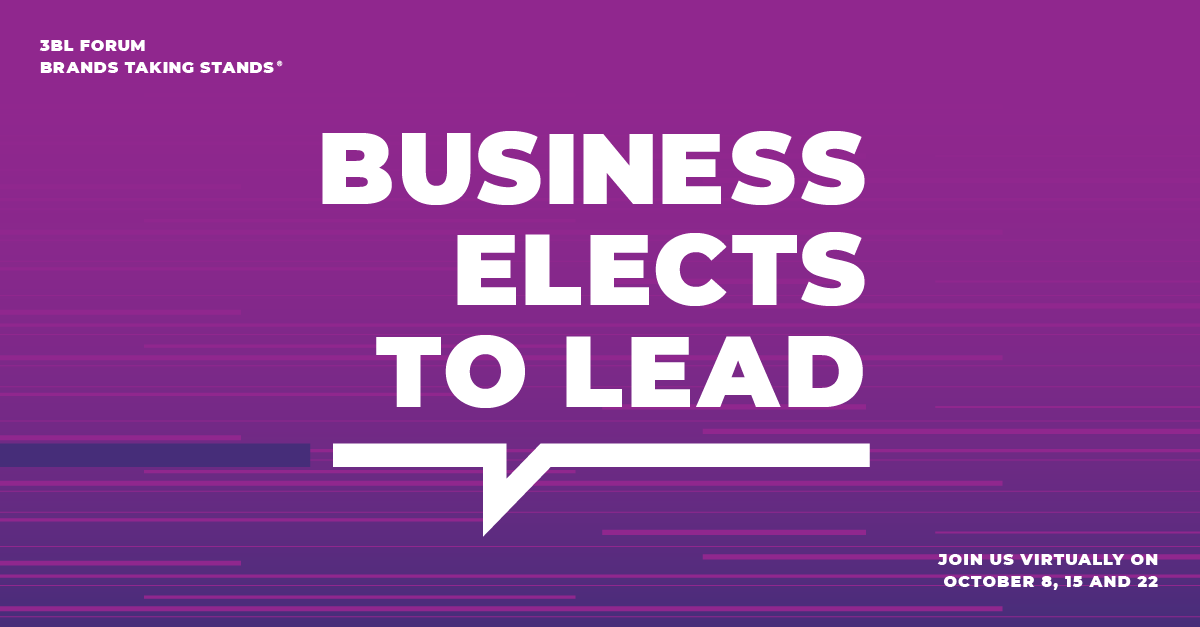
(Editor's note: Bsure you sign up for next week's 3BL Forum: Brands Taking Stands: Business Elects to Lead event. Register for free here.)
The reinvigorated Black Lives Matter movement has called renewed attention to structural racism and unconscious bias embedded in the American legal system and other facets of society.
In response, over the summer many leading corporations re-examined their diversity commitments, ramped up their training and expectations for employee behavior, and pledged millions of dollars toward foundations and programs aimed at breaking down structural racism and other racial barriers.
The new presidential executive order on “Combating Race and Sex Stereotyping” seeks to nullify that progress while preventing any further action.
The loss-of-contract provision alone should have spurred corporate leaders to speak out, but there is an even more onerous — perhaps sinister is the right word — aspect of the executive order that jumps off the page.
Section 4-b establishes a federal hotline to “investigate complaints received under both this order as well as Executive Order 11246 alleging that a Federal contractor is utilizing such training programs in violation of the contractor’s obligations under those orders.”
Additionally, section 4-c requires all federal contractors, subcontractors, and their employees to submit information regarding “any training, workshop, or similar programing having to do with diversity and inclusion as well as information about the duration, frequency, and expense of such activities.” Section 6-c-iii further specifies that “at least one senior political appointee” will oversee compliance for each federal agency.
With this combination of encouraging snitches (for lack of a better word), gathering information on a massive scale, and politicizing oversight, the new executive order doesn’t merely skate around the edges of the career-destroying “Red Scare" of the 1950s, fueled by Republican U.S. Senator Joe McCarthy of Wisconsin. It rips whole pages out of the McCarthy playbook.
The calm before the storm?
Against this backdrop, it may seem curious that corporate leaders have not joined together in a furious pushback. However, this may just be the calm before the storm.
Writing for USA Today last week, reporter Jessica Guynn noted that “behind the scenes, individual companies and industry groups are supporting efforts to mount a legal challenge to the executive order, similar to industry opposition to the president’s Muslim travel ban.”
If that is so, it is possible that opponents of the ban are waiting for the results of the November 3 election before taking action. A new president could blot out the executive order with one swipe of a pen, rendering the whole issue moot.
On the other hand, if President Trump is elected to another four-year term, Guynn’s reporting suggests that leading corporations — including powerful defense contractors — will be ready for a fight.
The U.S. Department of Defense speaks out, kind of
Of all the federal agencies affected by the new executive order, the U.S. Department of Defense (DoD) stands out in terms of its size, history and role in breaking down segregation barriers. DoD was among the many federal agencies that responded to the Black Lives Matter movement last summer with a renewed commitment to diversity.
On July 21, while the nationwide Black Lives Matter marches were still at a peak, DoD held a press briefing on its diversity commitments and posted a follow-up article on its official website, defense.gov. DoD noted that the Defense Board on Diversity and Inclusion in the Military had just begun meeting to conduct “a comprehensive six-month study and to develop concrete, actionable recommendations to foster equal opportunity, diversity, and inclusion among all ranks.”
The effort specifically includes the very areas that the new executive order seeks to eliminate. It emphasizes the need to develop “educational requirements to educate service members on the signs and effects of unconscious bias.”
On the other hand, DoD signaled a shift in emphasis following last week’s directive from the Oval Office. On September 24, McClatchy D.C. reporter Tara Copp took note of a virtual town hall for military members, their families and their communities, presented by Defense Secretary Mark Esper along with other DoD senior leadership.
Copp reported that at the town hall, the chairman of the Joint Chiefs of Staff, General Mark Milley, said: “The military was moving ahead on another aspect of preventing unconscious bias, removing all identifying information, including photographs, from a service member’s records when they are considered by military promotion boards.”
That pretty much misses the point. If racial bias prevents Black soldiers from obtaining the same opportunities to qualify for promotion as White soldiers, then removing racial identifiers from promotion boards merely cements structural racism in place.
Milley also emphasized that “the military has been, and remains, the largest meritocracy in the world.”
“We know, internally, all of us, about the saying of e pluribus unum and the idea that we are stronger together. The idea that diversity builds a better team,” he added.
Again, the formulation of a meritocracy is not the same as eliminating the structural barriers to equality. However, Esper did suggest that DoD is serious about making headway on diversity, despite the new executive order.
As cited by Copp, Esper said, “We need to keep the pressure on to get to that state where we fully embrace diversity, inclusion and there’s equal opportunity for all.”
It remains to be seen if DoD keeps the pressure on and pushes back more emphatically against the last week’s directive. If and when corporate leaders are called upon to fight, it would be helpful to have a powerful ally on their side.
Sign up for the weekly Brands Taking Stands newsletter, which arrives in your inbox every Wednesday.
Image credit: David Mark/Pixabay
A Conversation on the Challenges of Growing ESG Investing Worldwide


Yesterday, we started a conversation with Georg Kell, considered one of the fathers of environmental, social and governance (ESG) investing. His new book, Sustainable Investing: A Path to a New Horizon, takes a close look at the historic convergence between corporate sustainability and ESG-lens investing as a force for good that, together, help drive systemic market changes.
Since his retirement from the United Nations, Kell has been advising executives from diverse industries on questions of business transformation and sustainability. And for four years, he has been chairing the Volkswagen Sustainability Council and working to lead the company out of its crisis following the "dieselgate” scandal in 2015.
TriplePundit: What are the main challenges in building a more sustainable financial system and to bring climate risk and resilience into ESG-lens investing and, really, the heart of financial decision making? You note in your book that we’re talking about a massive reallocation of capital, creating unprecedented risks and opportunities, in what you describe as a VUCA (increasingly volatile, uncertain, complex and ambiguous business context). Can you expand on that?
Georg Kell: There are short-term challenges for investors and sustainable investing at large. It's still difficult to get the right tool off the shelf at the right moment. The data world is still not up to speed. There's a lot of inconsistency and incoherence. However, at the same time, there is a lot of innovation happening and I'm quite confident that much better data analytics and capabilities are being brought to the marketplace. This will enable financial institutions to embrace this agenda much faster.
Another challenge is that there's still uncertainty about the bigger framework conditions on the regulatory side. The new taxonomy being released in Europe, however, will be a major regulatory push for this movement, which the market is watching closely.
Another problem is: How do you change financial institutions from within when the leadership is reluctant to embrace change or give up established practices? Again, COVID-19, I am convinced, will accelerate that change at the institutional level.
I also think business education needs an overhaul. Business students today are still looking at finance as a black box isolated by and large from societal changes. There's a major transformation happening in societies where ESG issues are gaining relevance, and it affects all industry sectors. Getting a handle on that will be increasingly necessary to be successful in the field of business.
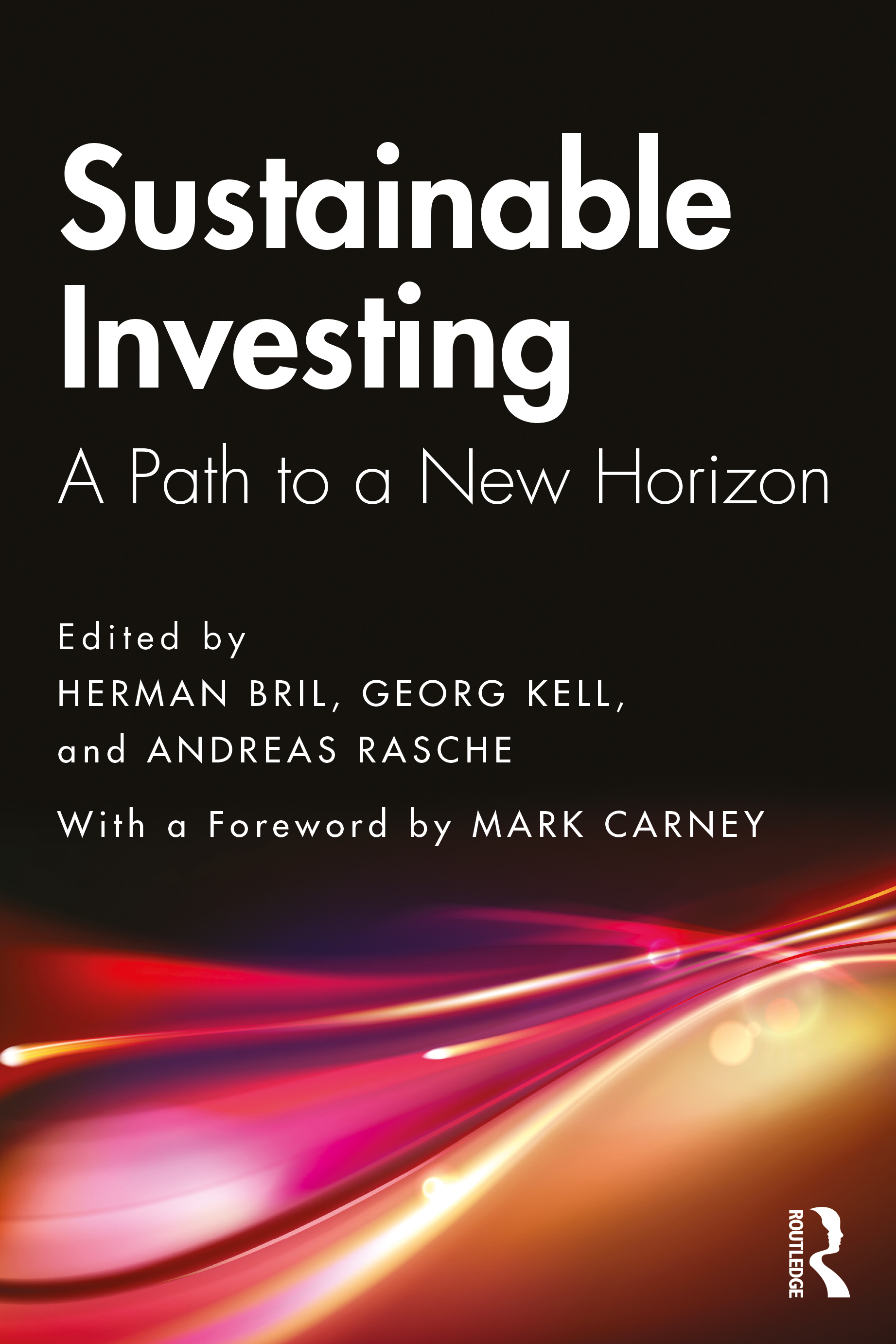
3p: What are the main drivers that will determine if we can rise to the challenge of sustainability?
GK: In my mind, there are three forces, and they’re universal. They play out across all countries and regions and they're irreversible, at least in the short or medium term. The first is technology. Clearly the pace of innovations has been accelerating. Technology allows transparency. It allows measurement and quantification of externalities. We couldn’t handle that just a few years ago. What's happening right now is nothing short of a revolution, especially in the world of finance where big data, self-learning and AI are now kicking in to make sense out of ESG factors and offering much deeper insights into risks and opportunities. This is helping financial analysts who may not necessarily have the knowledge about ESG issues, but want to apply some off-the-shelf tools.
Secondly, we have the concept of the nine planetary boundaries that provide a safe operating space for humanity, as developed by climate scientist Johan Rockström, a contributor to the book. The boundaries include climate change, biodiversity loss and extinction, land-system change, freshwater use, and ocean acidification, among others. Crossing these boundaries increases the risk of generating large-scale abrupt or irreversible environmental changes. We are just now realizing that the pace of disruption to the these planetary boundaries is happening much faster than even scientists have predicted, as we see with the wildfires in California now and the ones in Australia earlier this year.
The third force, and this also makes me feel positive, is young people. I have lived in the U.S. for over 30 years, and I am delighted that young people are taking to the streets around social issues. It shows they care about their future and they want to contribute to the public good. This intergenerational change is powerful.
3p: How should company leaders demonstrate to investors that they are serious about ESG in a new financial system with climate resilience at the center?
GK: Businesses have long understood that efficiency is important to reduce costs and reduce potential liabilities. But it is only recently that corporations have started to understand that their emissions and footprint are more than just the cost factor in the equation. Many of them did just enough to comply with regulation — a game of compliance optimization. That has changed radically because carbon and emissions are now seen as one of the central pillars for a future license to operate. It goes beyond a fundamental cost aspect into a strategic component. That is also because carbon pricing is bound to increase; negative carbon is bound to become the currency of the future. Corporate executives are starting to understand that regulators over time will be quite tough on these issues, and there's no escaping anymore that consumers and customers increasingly want to know their footprint.
And increasingly investors are aware of the risks of companies being too exposed on the emissions side and then all of a sudden falling into the trap of stranded assets or negative backlash. Investors want to hear from executives: What is your plan to reduce carbon and other emissions? How do you think you can achieve this? What kind of technologies were you betting on? How is your value chain organized and can you carry them with you? What are the bottlenecks? They want to have a compelling narrative. And of course, we want to know if companies can tell us their current footprint. Amazingly, many corporates still don't have a good accounting for their emissions. In today’s world of risk management, that is inexcusable.
Corporations have to move from compliance optimization to advocate a policy framework for carbon pricing. In other words, they need to see their role as no longer blocking climate action policies but actually supporting them, because if your new business model is to be successful, we need a change in policy frameworks. In the end, there’s just no way around committed leadership. Increasingly, disruptions are ahead of us. It’s becoming the new normal. You need to have clear understanding of the issues. And then you build your processes, your operations, and you retool them. And if you have the ambition, you design the leap for the future.
Sign up for the weekly Brands Taking Stands newsletter, which arrives in your inbox every Wednesday.
Image credit: Bryan G/Unsplash
Citizens Want Climate Action — And How They Want to Pay for It May Surprise You


In survey after survey, citizens indicate time and again that they want bold climate action. The disconnect, however, is how to pay for it. Even though renewables have fallen dramatically in price, there are still costs that will be incurred. Fuel prices, at least in the short term, will have to go up — news that consumers don’t want to hear, and politicians are reticent to deliver.
Attempts to mitigate climate change risks have often had rides more bumpy than smooth, however, as in angst that resulted in protests in France and Germany and an Obama era cap-and-trade program that never got off the ground. Despite some leading conservatives’ support for a revenue-neutral carbon tax, that idea for climate action never went far in Washington, D.C. either.
One survey, however, offers clues that more citizens are open to bold long-term plans.
In a recent Nature Climate Change study, researchers asked more than 10,000 citizens across France, Germany, the United Kingdom and the U.S. about how they would want to pay for climate action policies.
One could say the proverbial gun was pointed to citizens’ heads with these researchers’ four options: prices starting low and gradually increasing over time; costs starting high and decreasing over time as progress is made; prices starting low, increasing over time, and then eventually reducing in cost again; and the final option, a constant-cost plan.
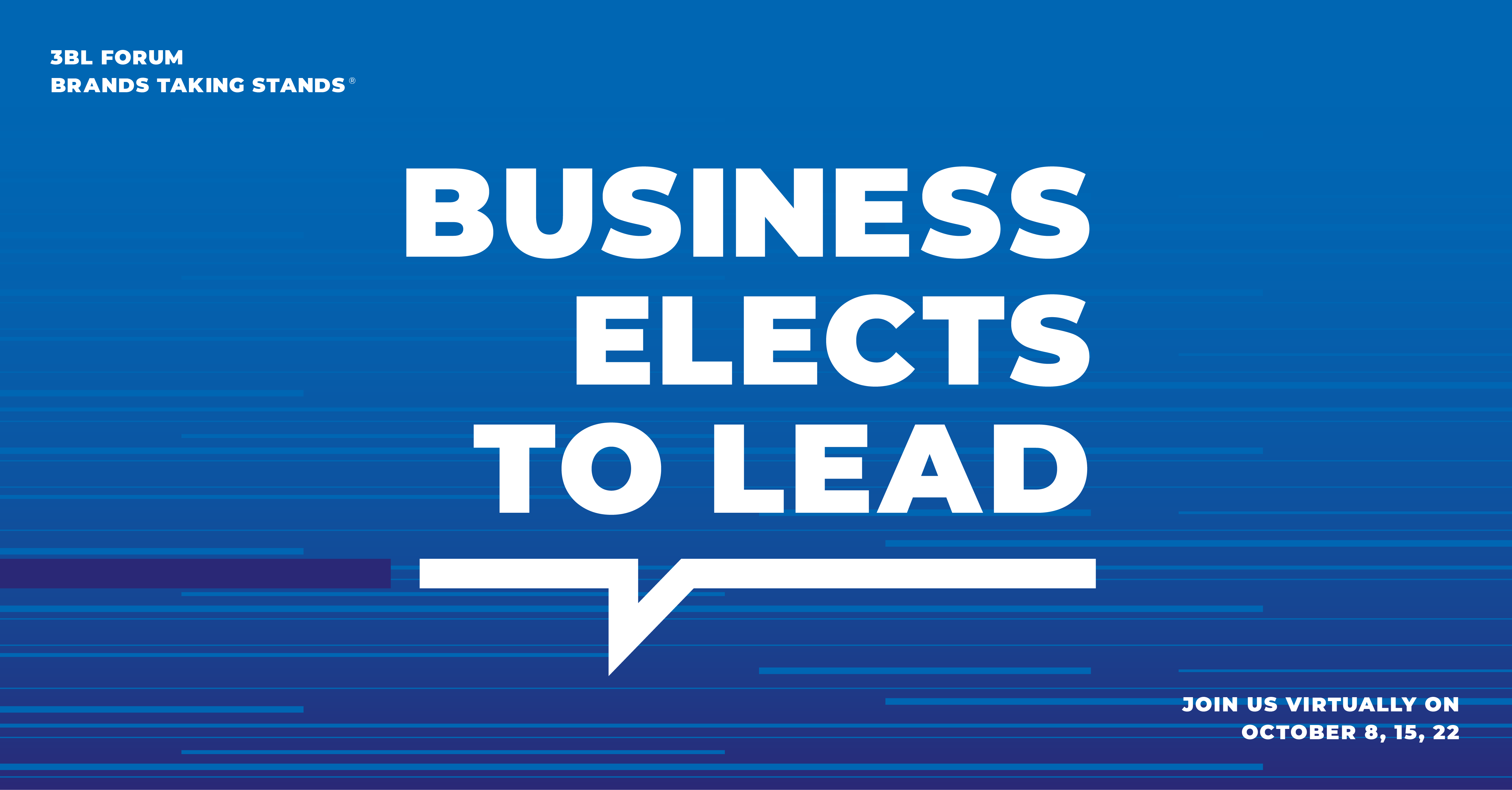
(Editor's note: Be sure you sign up for next week's 3BL Forum: Brands Taking Stands - Business Elects to Lead event, beginning Thursday, October 8. Register for free here.)
Across all four countries, the answer may surprise you: 58 percent they would prefer the “constant cost” plan.
Considering human nature, that sentiment is not really surprising. Most of us hate it when the cost of anything goes up, but at the same time, we’re accustomed to prices increasing from time to time, whether they are for food, insurance, entry fees into parks or a broadband connection. And as those costs go up, and not fluctuate, the reality is that most of us find one way or another to budget for the changes. The bottom line is that consumers want certainty — which is why the constant yo-yo costs of gasoline is a common conversation you overhear at the coffee shop or among your friends and family.
The countless number of environmental disasters this year may also be nudging more citizens to rethink their views on how much climate action is a cause worth pursuing — as long as someone else is paying for it. It’s become pretty clear that we will all have to contribute funds one way or another. Now it’s time for energy firms and companies in other sectors to get on board — and that massive shift is apparently underway, too.
Sign up for the weekly Brands Taking Stands newsletter, which arrives in your inbox every Wednesday.
Image credit: Jonas Von Werne/Pexels
Banning Gas-Fueled Cars by 2035, California Opens Door for Electric Vehicles
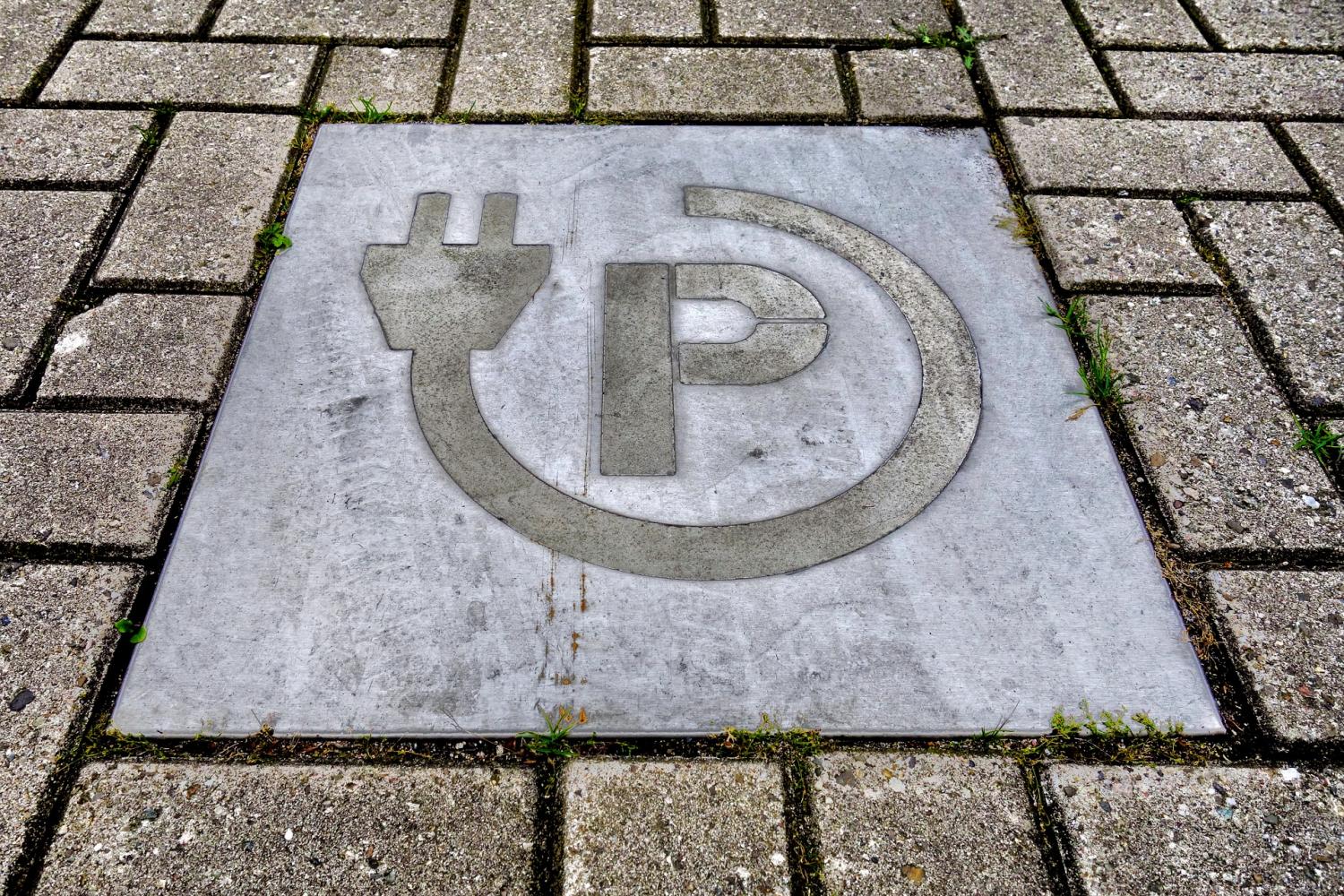
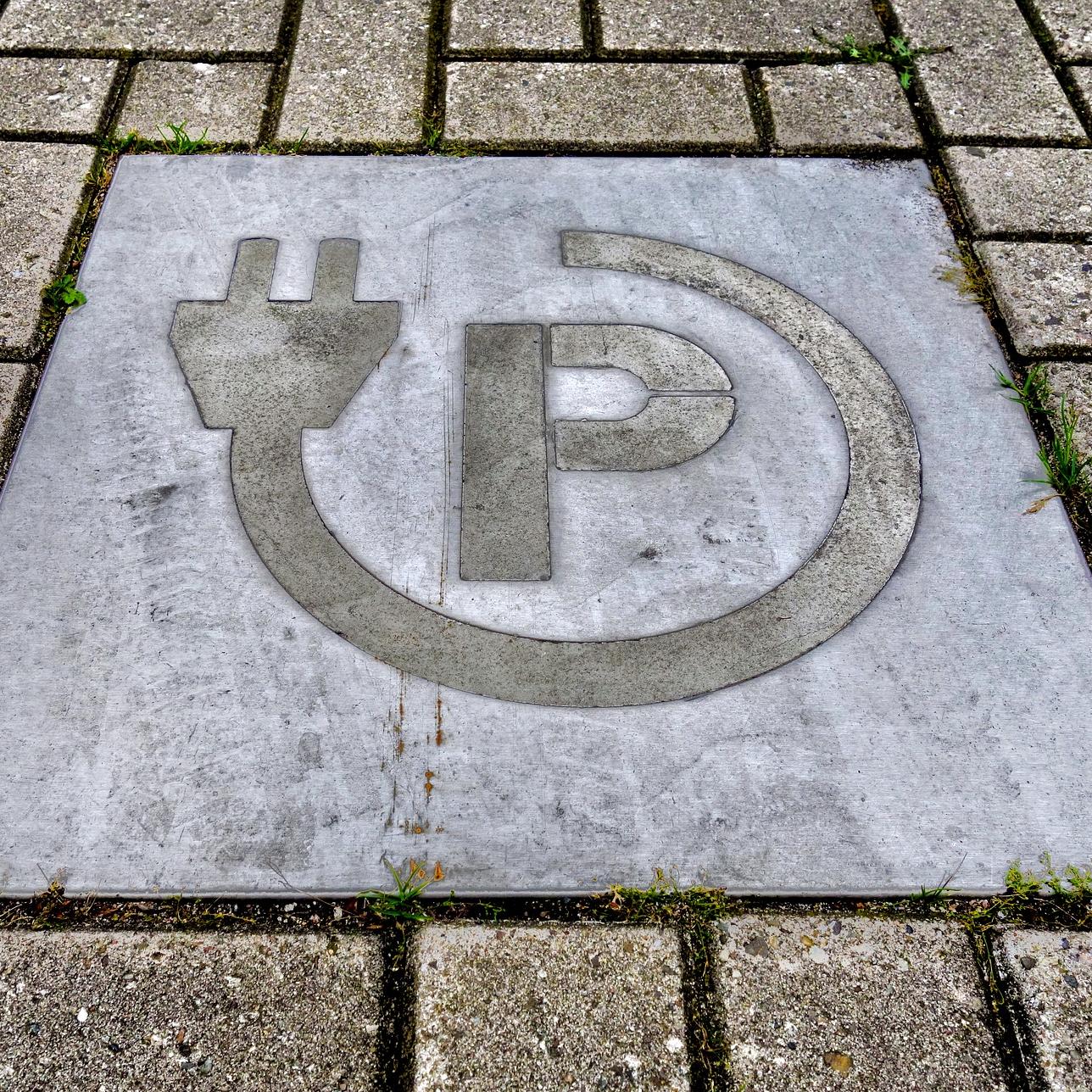
At the height of this year’s Climate Week, California Gov. Gavin Newsom revealed his new vision for 2035: only electric vehicles, as in zero-emissions cars and passenger trucks, at new car dealerships. That’s according to Executive Order N-79-20, signed last Wednesday.
The order requires the California Air Resources Board (CARB) to develop any necessary regulations. Doing so would make California the first state to enact such mandates — though Hawaii, Massachusetts and Washington have also considered similar legislation. California would find itself among the likes of the U.K., France, Germany and 12 other countries that have already established timelines for phasing out petroleum-fueled passenger vehicles.
Why this executive order? Why now?
Newsom sees the executive order as a necessary step in California’s sustainability journey in preventing future devastation related to changes in the global climate. This summer, wildfires have again run rampant across the state. San Francisco’s sky has been blanketed with smoke, a symbol of the acres lost and homes and lives endangered.
“This is the most impactful step our state can take to fight climate change,” Newsom said in a press statement. “For too many decades, we have allowed cars to pollute the air that our children and families breathe.”
California had already adopted a rule in June requiring half of all medium- and heavy-duty trucks sold to emit zero emissions by 2035. Pushing this extra mile could have significant benefits for the state’s carbon footprint in the long term. Passenger vehicles are the single largest contributor to the state’s greenhouse gas emissions, representing a third of the total.
Another important step forward for electric vehicles
What’s the alternative to gas? Electric vehicles (EVs) are the leading technology for this transition. Some remain skeptical of the sustainability of EVs, from disposing batteries to sourcing power, in many places still dominated by petroleum and natural gas. But the evidence clearly points to EVs being the right investment for a cleaner future. Even though they currently represent about 8 percent of the California market share, an EV future is clearly top of mind for vehicle manufacturers.
“If you look at the investments [car manufacturers are] making, it’s pretty clear that they’re betting their future on a change,” Brett Smith, director of technology at the Center for Automotive Research, told Marketplace.
And California is a perfect breeding ground for the EV movement, claiming half of the United States’ sales for 2018.
Why car manufacturers should embrace the shift to electric vehicles
There are some major forces already pushing the car industry in the EV direction. A McKinsey report from 2017 revealed factors including the potential for profitability in designing tailored vehicles and the rise in demand from consumers who are learning more of the benefits of EVs.
With 15 other countries already requiring a transition to zero-emission vehicles, in a way, manufacturers can’t afford to fall behind. Tesla, Renault Nissan Mitsubishi, Geely (a Chinese automaker), Hyundai and General Motors are just some of the companies currently leading the pack in EV innovation and sales.
Regulations are required for electric vehicles' long-term success
While a timeline is vital for speedy progress, other regulations will have to come along to support sustainable growth.
“Putting politics aside, EVs do well in markets that are highly regulated,” Benchmark analyst Mike Ward told Barron’s in an email. “To gain significant share outside [California], tighter regulations, expansion of charging stations and technological improvements will all be needed to make vehicles more attractive.”
Other concerns include the affordability of new cars in a state that already has a sky-high cost of living and protections for the jobs being created in this new industry.
Infrastructure improvements will also have to come along. During this time when California is grappling with forest fires, the utility PG&E has cut power for tens of thousands of people across the state during high winds.
Power outages are becoming a regular occurrence in California. “We see brownouts on a regular basis when there are high energy demands, just from air conditioning units, not cars that need to be charged up,” Karl Brauer, of search engine iSeeCars.com, said during a Marketplace segment.
Despite these requisites, the sign of the times is clear — the future is electric, not gas. Gov. Newsom’s order aligns with this vision and places the U.S. at the leading edge of progress with other nations that are forging this new path forward.
Sign up for the weekly Brands Taking Stands newsletter, which arrives in your inbox every Wednesday.
Image credit: Pixabay
ESG Pioneer Georg Kell on the Power of a Crisis to Shake Up Markets


At a time of incredible economic upheaval and business and political uncertainty, the durability of sustainable investing has been one of the brighter lights on the horizon. More money than ever is pouring into sustainable or environmental, social and governance (ESG) investments. These have grown by a stunning 34 percent over the past two years to $30.7 trillion — a trend that seems pandemic-proof, as TriplePundit has reported.
While this might seem like a relatively recent development, it’s been a long time coming. Few people know that as well as Georg Kell, considered one of the fathers of ESG investing. His new book, Sustainable Investing: A Path to a New Horizon, looks at the historic convergence between corporate sustainability and sustainable investing as a major force driving systemic market changes. As founding executive director of the U.N. Global Compact, Kell led a group of CEOs from over 50 major financial institutions in a UNGC initiative to integrate ESG into capital markets. This led to the groundbreaking U.N. report, Who Cares Wins, the springboard for the U.N.-supported Principles for Responsible Investment. Today Kell is chairman of Arabesque, an ESG Quant asset manager, which has built a tool around the core principles of the U.N. Global Compact to financially identify ESG issues using artificial intelligence.

Kell co-authored his new book with Herman Bril, director of the U.N. Joint Staff Pensions Fund, and Andreas Rasche, professor of business in society at the Copenhagen Business School's Centre for Corporate Social Responsibility. Among the heavyweight contributors are Paul Polman, former CEO of Unilever, a corporate sustainability luminary, and John Ruggie, professor of human rights and international affairs at Harvard’s Kennedy School of Government, who developed the U.N. Guiding Principles on Business and Human Rights. The foreword is by Mark Carney, former governor of The Bank of England, who famously coined the term “tragedy of the horizon” in 2015 to describe the catastrophic impact of climate change. The opportunity to avoid that tragedy inspired the book’s title.
I had a chance to speak with Kell about what he sees as the remarkable trajectory of ESG, both as a compelling business case and as one of the most significant trends in investing over the past decade. In these extraordinary time for companies, investors and markets alike, we discussed why this is an ideal moment to accelerate those market forces, kick the status quo to the curb, and define a new way forward.
TriplePundit: Why did you want to write this book, and how is it timely for the moment we are living in now?
Georg Kell: Finance has been lagging behind the real economy on the sustainability evolution by at least 10 years. That began to change with the first meta-studies that came out in 2014, including the work that Arabesque did with Oxford University, demonstrating that sustainability practices have an overwhelmingly positive influence on investment performance. The correlation between corporate performance and sustainability was very strong and powerful. Since then, we have seen the remarkable rise in ESG because the materiality notion was understood — that we're not only talking about doing the right thing and morally making the right choices, but it also has real financial implications.
All of a sudden, finance has started to catch up rapidly. Now some investors are out there pushing for change much faster than some corporations are capable of delivering it. A historic new convergence between corporate sustainability and sustainable investing is becoming a major force driving systemic market changes.
And now COVID-19 has shaken up established thinking and made us aware of vulnerabilities. At the same time, it is made it easier for executives to push for change that they wanted to do anyway. On the investor side, COVID-19 has put the spotlight on risks that are not yet part of the price signals that we know are out there and will hit us.
3p: Is the growing climate crisis a big reason for the surge in sustainable and ESG investing, and do you see this movement as mainstream?
GK: The climate crisis has been in the making for years, and we know that with scientific certainty. Yet many investors love to ignore it because it's long-term and slow moving. COVID-19 is almost like a wake-up call: This is for real, we had better prepare. Now we had better do something; otherwise it could threaten our very existence. Some are hearing this wake-up call. The evidence is there. For example, the Science Based Targets Initiative (SBTi) has seen a record flow in new participants since COVID-19 hit. Many more companies are now aligning their decarbonization goals with science-based targets.
The pandemic is changing risk perceptions in a fundamental way, enabling executives to drive change faster. There is no doubt that COVID-19 is acting as an accelerator for sustainability issues and in particular decarbonization. It has sharpened the awareness that the next big breakthrough in the corporate sphere is to establish firmly the business case for decarbonization. We’re on the cusp of a transition to a net-zero economy that could lead to a more sustainable financial system. For that to happen, sustainable investing must go mainstream. Some people think it’s already there, but of course it needs to be accelerated even faster.
Tomorrow, we’ll continue this conversation on ESG investing as we’ll discuss the challenges of building a more sustainable financial system worldwide.
Editor's note: Sign up for the weekly Brands Taking Stands newsletter, which arrives in your inbox every Wednesday.
Image credit: PXHere